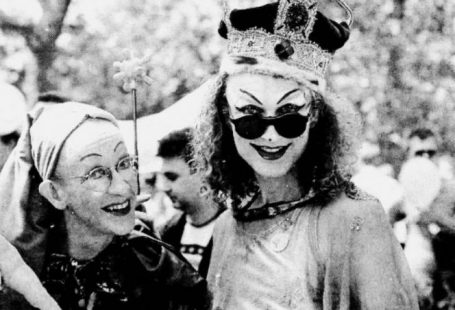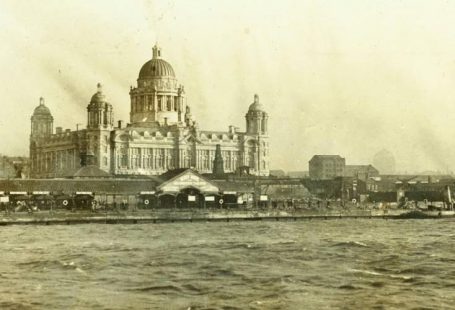It was the winter of 1813-1814. Napoleon retreated from Moscow, and the Thames froze over between London Bridge and Blackfriars Bridge from 27th December 1813 to 5th February 1814. And onto the frozen surface of the river arrived the ‘Frost Fair,’ an event that continued a centuries old tradition, and proved to be the last of its type.
Using the Archive, it is possible to discover some fascinating contemporary accounts of this last Frost Fair, and also, by searching newspapers of a later date, it is also possible to find more illuminating accounts and illustrations of London’s original Winter Wonderland.
 Illustrated London News | 25 February 1843
Illustrated London News | 25 February 1843
The frost began to set in during late December of 1813, and soon a ‘solid surface’ of ice began to form on the Thames, ‘from Blackfriars’-bridge to some distance below Three Crane Stairs, at the bottom of Queen-street, Cheapside.’ Saunders’s News-Letter, 8 February 1814, reports that ‘the Watermen taking advantage of this circumstance, placed notices at the end of all streets leading to the City-side of the river, announcing a safe footway over the river, which, as might be expected, attracted an immense crowd to witness a scene so novel.’
Such crowds needed entertainment, and entertainment they found.
The Sussex Advertiser, 7 February 1814, describes the ‘pleasing novelties’ on offer:
Gambling, in all its branches, threw out different allurements…leaving kind customers without a penny to pay for the passage over the plank to the shore. Skittles were played by several parties, and the drinking tents filled by females and their companions, dancing reels to the sound of fiddles, while others sat round large fires, drinking rum, grog, and other spirits. Tea, coffee, and eatables were provided in ample order.
Saunders’ News-Letter further describes the curious ceremony of ‘roasting a small sheep, which was toasted, or rather burnt, over a charcoal fire. For a view of this extraordinary spectacle, sixpence was demanded and willingly paid.’
Indeed, the Frost Fair sounds positively magical, with booths ‘ornamented with streamers, flags, and signs.’ Remarkably, the frozen surface was able to support both booths and thousands of people, as well as kitchen fires and furnaces, whilst ‘animals from a sheep to a rabbit, and goose to a lark, were turning on numberless spits.’
Illustrated London News | 21 December 1844
The Frost Fair of 1814 was not the first event of its kind, the Thames having frozen over 26 times between 1408 and 1814. The Great Frost of 1683-1684 saw the Thames freeze to a thickness of 11 inches, and as in 1814, a Frost Fair was held. The Illustrated London News, 26 April 1879, offers the following description of that particular event:
There was a street of Booths built from the Temple to Southwark, where were sold all sorts of Goods imaginable – namely, Cloaths; Plate; Earthen Ware; Meat Drink, Brandy, Tobacco, and a Hundred sorts of other Commodities not here inserted. It being the wonder of this present Age, and a great consternation to all the Spectators.
The below verse was written about the 1684 Frost Fair, and reflects the fascinating interrelation between the Frost Fairs and literature. Indeed, the Sussex Advertiser notes how a ‘number of printers’ brought their presses onto the ice, one pamphlet declaring: ‘Can the press have greater liberty? Here you find it working in the middle of the Thames.’
Behold the Wonder of this present Age
A Famous River now become a stage.
Question not what I now declare to you
The Thames is now both a Fair and Market too.
And many Thousands dayley to resort,
There to behold the Pastime and the Sport
Early and late, used by young and old
And valued not the fierceness of the cold.
Illustrated London News | 26 April 1879
However, the Frost Fair of 1814 proved to be the very last, as the Thames did not freeze over completely enough again, due to climate changes and also the construction of the new London Bridge.
The Illustrated London News, 25 February 1843, describes the eventual thaw:
The view on the river was one which, in strangeness of effect, and ruggedness of grandeur, was never equalled in London. The whole river was a mass of moving icebergs, rolling along with the tide, striking against each other, and against the piers of the bridges, with a most deafening and continuous noise, and miniature representation of what may be supposed to take place in the Arctic regions.
The writer of the above in the Illustrated London News, however, seems relieved about the permanency of the thaw: ‘A frost fair is a very pleasant thing to read about, and a very agreeable thing to remember…but when Father Frost takes Father Thames by the nose, it is quiet time for poor mortals to get out of the way and congratulate themselves for being exempted from this mighty and unrelenting potentate.’







